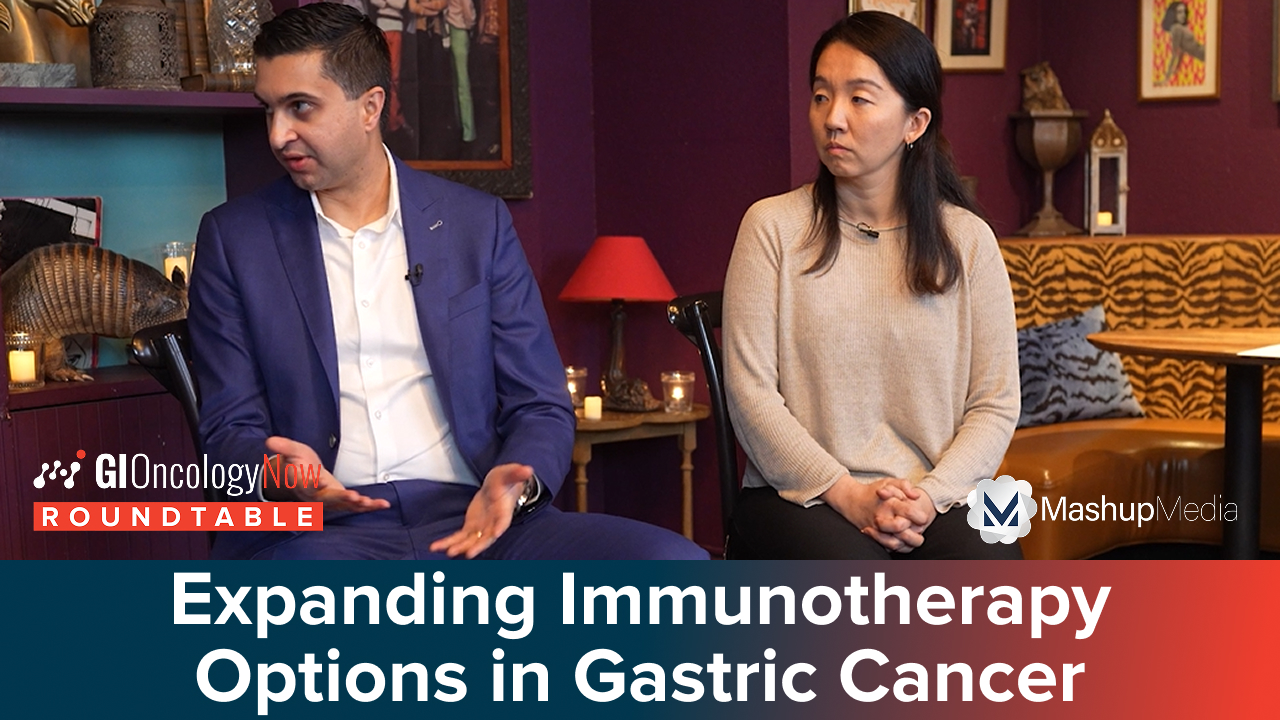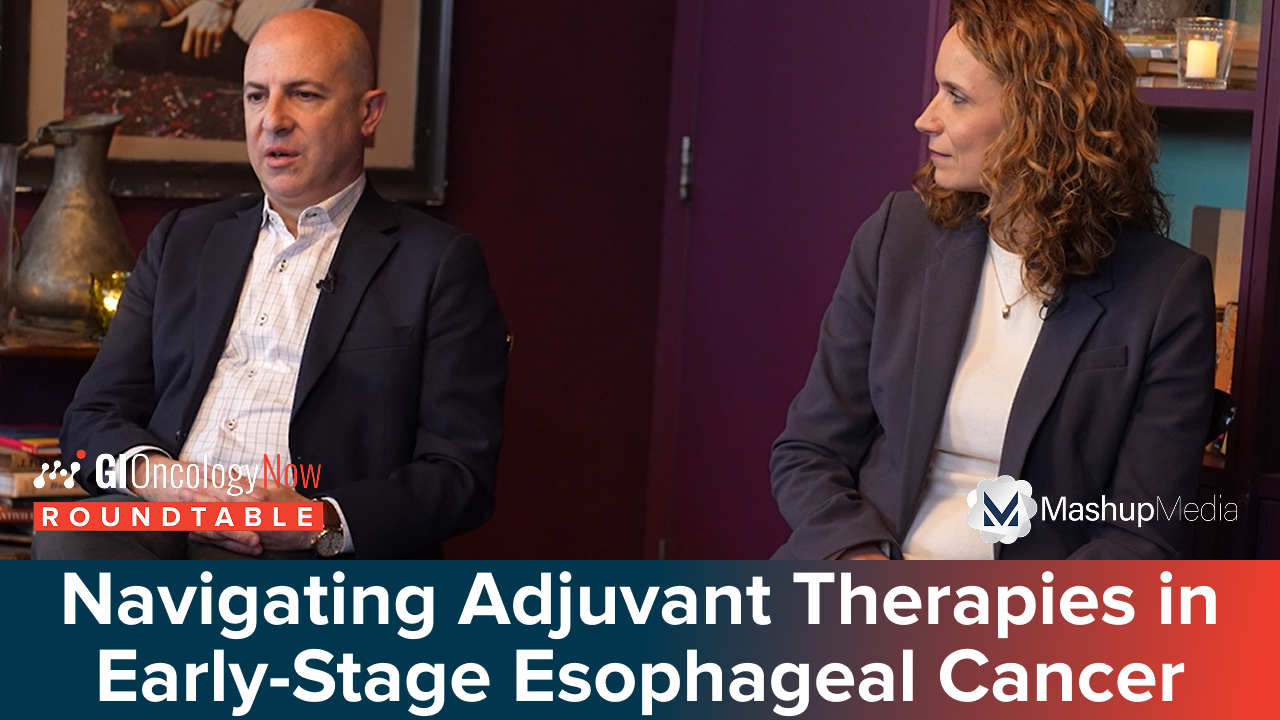Personalized Care in Gastric and Esophageal Cancers: Biomarkers, Diagnosis, and Treatment Approaches
By Nataliya Uboha, MD, PhD, Zev Wainberg, MD, MSc, Suneel Kamath, MD, Sunnie Kim, MD - Last Updated: March 19, 2025A roundtable discussion, moderated by Nataliya Uboha, MD, PhD, discussed the current treatment considerations for gastric cancer, GEJC, and ESCC, as well as relevant clinical trial data from the 2025 American Society of Clinical Oncology Gastrointestinal Cancers Symposium. Dr. Uboha was joined by Zev Wainberg, MD, MSc; Suneel Kamath, MD; and Sunnie Kim, MD.
In the first segment of the roundtable series, the panel focuses on the multidisciplinary management of gastroesophageal cancers, highlighting differences in patient presentations across regions, the evolving role of biomarker testing for personalized treatment strategies, and the importance of timely diagnostic results to guide treatment decisions involving chemotherapy, immunotherapy, and targeted therapies.
View the next segment on Evolving Strategies for Early-Stage Esophageal Cancer: FLOT, CROSS, and Immunotherapy.
—
Dr. Uboha: Let’s start by discussing the types of patients you see in your practice. How do they typically come to you, what symptoms do they present with, and how do you evaluate them?
Dr. Kim: For patients with earlier-stage disease, we have a multidisciplinary conference where they can consult with medical oncology, radiation oncology, and surgical specialists. We review their cases because treatment has become much more multimodal.
The most common presenting symptom is dysphagia. Here in Colorado, we primarily see distal esophageal and GEJ adenocarcinoma. Once a biopsy confirms the diagnosis, we review their PET scans and discuss the recommended next steps.
Dr. Uboha: That’s very similar to the patient population I see. What about you, Zev, in California?
Dr. Wainberg: We tend to see a different population. While we do see many GEJ cases, which are often in Caucasian patients, we also have a significant minority population. We frequently encounter distal body tumors, which are more common in patients of Asian or Latino descent. These patients often present with symptoms like vague abdominal pain, early satiety, and weight loss rather than dysphagia, as their swallowing remains intact.
Dr. Uboha: That’s a key difference in the presentation between gastric and esophageal cancer. Suneel, when you see patients in your clinic, what biomarkers are typically tested at diagnosis? Is there a difference between esophageal and squamous cell cancers?
Dr. Kamath: We try to conduct broad NGS panels for everyone, especially in the metastatic setting. For early-stage disease, we primarily do MMR testing due to the significant benefit of immunotherapy in that setting compared to chemotherapy. In the past, we approached ESCC and adenocarcinoma differently. However, with the widespread adoption of NGS and numerous tumor diagnostic approvals, we’ve realized it’s important to identify every potential biomarker, even in squamous cell cases.
Dr. Uboha: Is it fair to say that most of us primarily see adenocarcinoma patients, with squamous cell cancers being a minority in the U.S.?
Dr. Wainberg: Yes, that’s accurate. The incidence of squamous cell carcinoma has declined in the U.S. over the past 20 years, making it less common and harder for us to gain as much experience with it.
Dr. Uboha: It’s definitely a tougher patient population to treat, often presenting with multiple comorbidities. Before we dive into disease management by stage, let’s spend some time discussing biomarkers. For advanced disease, which biomarkers are reflexively tested at your institutions, and what’s the turnaround time for these results? Suneel, maybe you can start.
Dr. Kamath: I wish more biomarkers were tested reflexively. For us, MMR is the only reflex test. This disease has become biomarker-rich recently, with MMR, PD-L1, HER2, and emerging targets like Claudin 18.2 all being critical to check upfront.
Dr. Uboha: Are these tests conducted in-house, or are they sent out?
Dr. Kamath: All are done in-house except for Claudin 18.2, though we are in the process of developing that assay. For now, we still send it out.
Dr. Uboha: Sunnie, how about your institution?
Dr. Kim: We conduct in-house reflex testing for early-stage disease, including MMR, HER2, and Claudin 18.2, given the risk of metastasis. For advanced disease, I usually order broad NGS testing to identify potential clinical trial opportunities and catch rare mutations like BRAF and NTRK fusions, though I’ve never personally seen an NTRK fusion.
Dr. Uboha: Zev, do you typically have these results available at the first patient consultation, or does it take time?
Dr. Wainberg: At our institution, we have the IHC results—which directly guide treatment decisions—available right away. This includes HER2, PD-L1, and Claudin 18.2. NGS results, which usually don’t have immediate treatment implications, take longer. Having these IHC results upfront allows us to discuss treatment options and select the appropriate targeted therapies.
Dr. Uboha: As everyone pointed out, treatments are becoming increasingly personalized. It’s crucial to have these biomarker results available upfront to guide decisions on chemotherapy, immunotherapy, and targeted agents.







 © 2025 Mashup Media, LLC, a Formedics Property. All Rights Reserved.
© 2025 Mashup Media, LLC, a Formedics Property. All Rights Reserved.